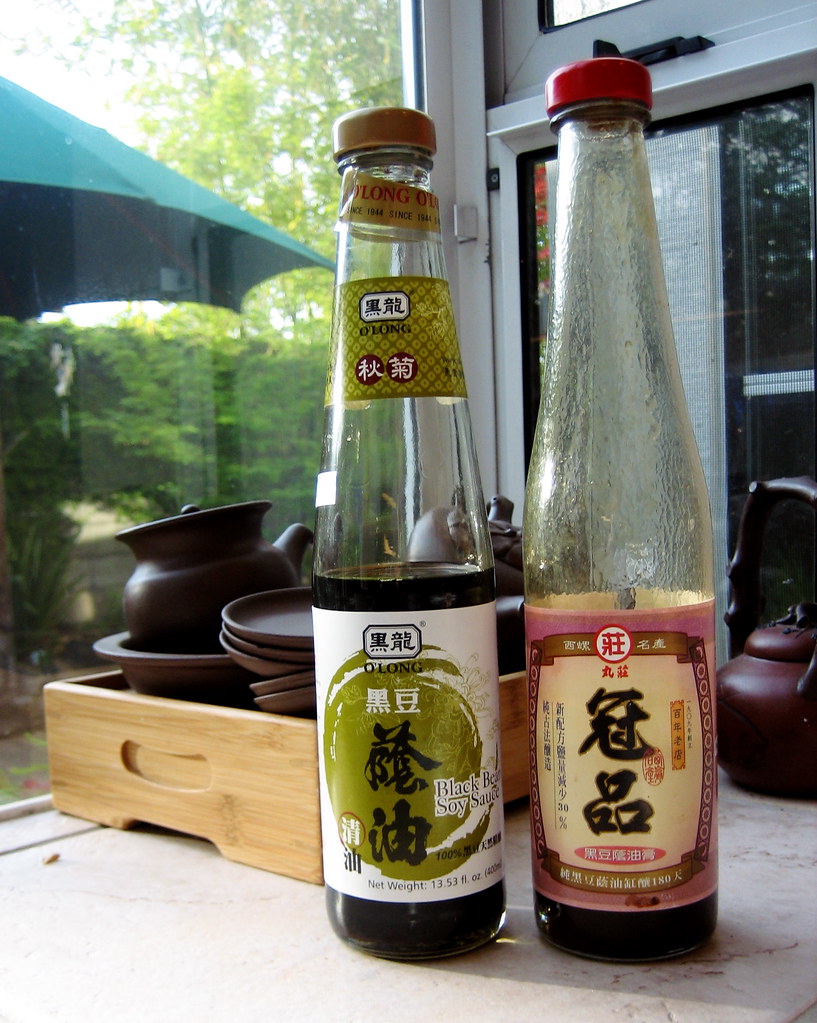Black bean sauce is commonly used in Asian cuisines and is made from a combination of fermented black beans with oil, garlic, and sometimes other spices such as chilli pepper or ginger.
In most cases, black bean sauce is gluten-free as the ingredients used are inherently gluten-free and do not contain any wheat, barley, or rye. However, iis always important to double check the label as it is still possible that manufacturers may include additives into the product that do have gluten in them.
Does Black Bean Paste Have Gluten?
Another commonly asked question is does black bean paste have gluten. Black bean paste is similar in many ways to black bean sauce and is also made from fermented black beans and is also used widely in Asian cooking as an ingredient in many dishes.
Black bean paste usually does not contain gluten but like black bean sauce it is still a very good idea to double check the ingredients or even check with the manufacturer if you have any doubts about the presence of gluten to be 100% sure.
How To Tell If A Product Is Gluten Free?
If you are someone that is relatively new to catering for coeliac you may be wondering how you can actually tell from the ingredients list whether a product is actually gluten-free. In most countries around the world the food labeling laws generally make it quite easy to identify a product that has gluten because manufacturers are required to declare the presence of any possible allergens.
Most manufacturers will highlight the presence of allergens in bold within the ingredients list and in cases where a product is derived from an allergen it will be designated in brackets next to that ingredient which makes it easy to identify. So the main things to look for are the presence of wheat, rye or barley.
Manufacturers will also sometimes place a declaration of the allergens present in the product at the end of the ingredients list to make it really clear for consumers. However, in some cases, they will sometimes put in a statement like this product May contain gluten.
The may contain statement basically means that there are no allergens present in the product, but it is made on equipment that process as both gluten free and gluten containing products. However, given the relative size of commercial batches and the fact that they clean equipment between runs means that in most cases a product with that statement on it will be completely safe for a coeliac to eat because the level of gluten present is negligible.
However, there is one exception to be aware of which is the cases where products contains glucose or dextrose derived from wheat. In these cases the processing of the wheat removes the presence of gluten which means that these products will not contain any gluten.
However, even though these products are safe to eat the manufacturer will still need to declare the presence of allergens which can make it confusing for some consumers
Which Chinese Dishes Are Gluten-Free?
Generally, chinese dishes will often contain gluten and eating at a Chinese restaurant is often difficult unless the restaurant specifically caters to coeliacs. This is largely because chinese restaurants use a wide range of sauces that often contain gluten and are often not set up for catering for coeliacs. However, despite this, there are still a few dishes that you can eat but you still need to double check with the staff at the restaurant to ensure that they are safe.
Some examples of dishes that are likely to be gluten-free include:
- Steamed vegetables
- Stir-fried vegetables with tofu or meat
- Fried rice made with gluten-free soy sauce or tamari
- Hot and sour soup
- Egg drop soup
- Szechuan-style boiled fish
- Kung pao chicken (made with gluten-free soy sauce or tamari)
- Sweet and sour pork or chicken (made with gluten-free ketchup or vinegar)
What Sauces Used In Chinese Cooking Are Most Likely To Contain Gluten?
When enquiring about the gluten-free status of dishes it is a good idea to have some idea about which sauces are most likely to contain some gluten. To help give you some idea of which sauces are likely to cause a problem we have created a list below of the most common ones.
- Soy sauce Is one of the most common sources that normally contain gluten however there are gluten-free versions of the source available.
- Hoisin sauce is another sauce that is commonly used in things like Peking duck which will often contain wheat.
- Oyster sauce is a sauce that is normally used on noodles and some vegetable dishes and therefore needs to be avoided.
- Teriyaki sauce is a sauce that is used in Japanese cooking rather than Chinese cooking and is based on soy sauce which typically contains wheat.
Relevant Articles
Can Touching Gluten Make You Sick If You Are A Coeliac?

Comments are closed